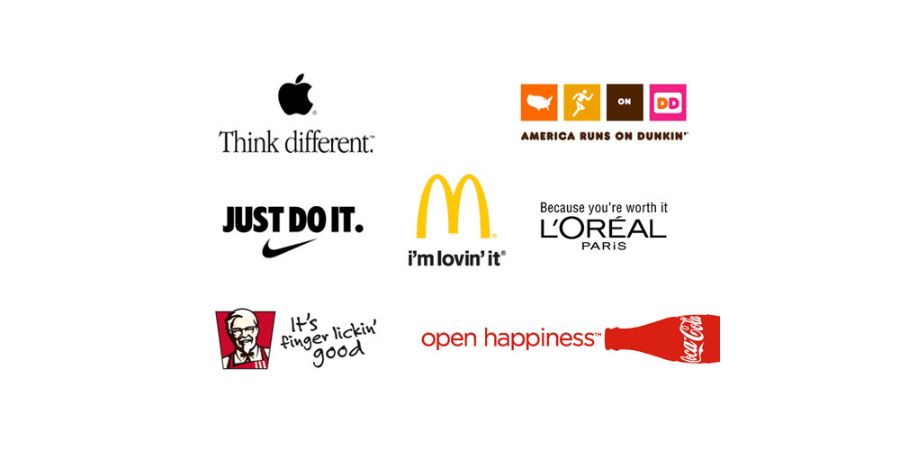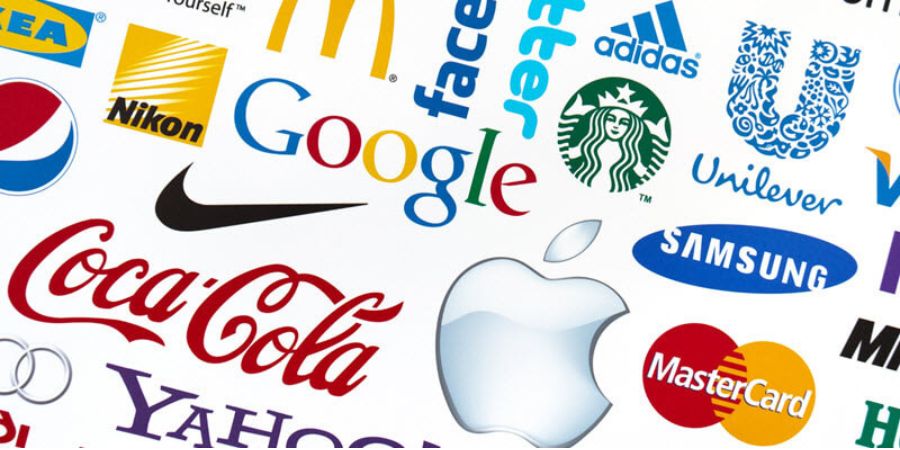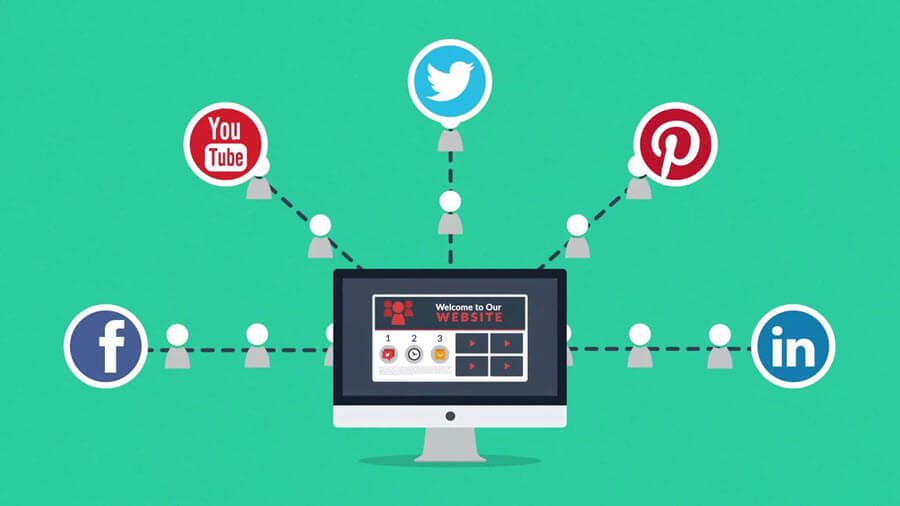While some people think branding is only for big businesses, the truth is that everyone has a personal brand.
Here I will show you how to create a Personal Brand that sets you apart from the rest.
Your personal brand is the combination of your values, mission, and identity that you present to the world. It’s what makes you unique and sets you apart from other people.
Creating a solid personal brand can help your career and business endeavors. It can also help you attract opportunities, customers, and clients.
If you’re not sure how to create a personal brand, don’t worry! This guide will walk you through the process step by step.
First, you’ll need to define your values and mission.
Then, you’ll come up with a brand name and slogan.
Next, you’ll create a logo and branding guidelines.
Once your branding is complete, you’ll start marketing your brand online and offline.
Finally, you’ll need to maintain your brand over time. Remember, staying true to your brand identity is essential to success.
What Is Branding, And Why Do You Need It?
You must consider branding if you own or operate a large or small business. Too many companies overlook branding or don’t give it the attention it deserves.
But here’s the thing: Branding is one of THE most important aspects of any business.
So, what exactly is branding? Why is it so important? And how do you create a brand for your business? Keep reading to find out!
What Is Branding?
Branding uses a name, term, design, symbol, or other feature to identify a product or service and distinguish it from other producers.
When you hear the word “brand,” you probably think of big companies like Coca-Cola or Nike. But every business, no matter its size, has a brand.
Your personal brand is how people perceive you when they interact with you. And your business brand is how people perceive your business as a whole.
Many elements go into creating a brand, such as a logo, color scheme, tone of voice, etc.
But at its core, creating a personal brand is all about creating an emotional connection between your business and your customers.
When done correctly, branding can make people loyal to your company and encourage them to spread the word about your products or services.
What Are The Benefits Of Branding?
A strong brand identity is beneficial for businesses in many ways.
Some of the most important benefits include the following:
- Differentiation: A strong brand helps you to stand out from your competitors and be remembered by potential customers.
- Loyalty: A strong brand can turn first-time buyers into lifelong customers who are always quick to recommend your products or services to others.
- Increased sales: A strong brand can increase sales as customers are more likely to buy from businesses they trust and are familiar with.
- Higher prices: A well-known brand can charge higher prices than its competitors because customers are willing to pay more for the perceived value of the product or service.
Create a Personal Brand

Now that we’ve answered the question “What is branding,” let’s look at how you can create a brand for your business.
First, you must determine what makes your business unique and differentiates it from its competitors.
Once you know that, you can start working on creating an emotional connection with your target audience. This will involve crafting a message that resonates with them deeply and using visuals that elicit an emotional response.
It’s also critical to have a consistent brand identity across all platforms—from your website to your social media accounts—so that people always know they’re interacting with your business no matter where they encounter it.
Different Types Of Branding
When you think of branding, you think about corporate branding, which companies use to build trust and credibility with potential customers through elements like advertising and public relations.
But there are other types of branding, such as personal branding (used by individuals to further their careers) and cause branding (used by nonprofit organizations to raise awareness for their cause).
No matter what company you have or what type of products or services you sell, there’s a type of branding that will work best for you!
As we’ve seen, branding is essential for any business that wants to succeed in today’s competitive marketplace.
But what is branding exactly? And how do you create a brand for your own business? Keep reading to find out!
Define Your Personal Brand

To create a Personal Brand that sets you apart from the rest, you need to make it unique and different. It distinguishes you from the crowd and makes you stand out. But what exactly is a personal brand? And how do you define it?
To create your personal brand is the sum of your unique selling points, core values, and areas of expertise. It’s what you offer that is unique and different from everyone else.
To define your personal brand, you need to ask yourself four important questions:
- What are your unique selling points?
- What are your core values?
- What are your areas of expertise?
- What can you offer that is unique and different?
Answering these questions will help you to create a personal brand that is strong, authentic, and differentiated.
Let’s take a closer look at each question.
1. What Are Your Unique Selling Points?
Your unique selling points are the qualities and attributes that make you special and unique.
It’s essential to understand what these are so that you can effectively communicate them to others.
To determine your unique selling points, ask yourself:
- What are my strengths?
- What are my skills?
- What do I have to offer that is different from others in my field or industry?
2. What Are Your Core Values?
Your core values are the guiding principles that dictate how you live your life and conduct yourself in business. These values shape everything from how you communicate with others to how you make decisions.
Therefore, it’s essential to be aware of what your core values are so that they can inform every aspect of your life and work.
To determine your core values, ask yourself:
- What do I believe in?
- What kind of person do I want to be?
- What kind of business do I want to build?
3. What Are Your Areas Of Expertise?
Your areas of expertise are the things that you’re good at or have experience with. When people think of you, they should feel about you as an expert in these areas.
To determine your areas of expertise, ask yourself:
- What do I know a lot about?
- This could be either professional or personal knowledge/experience
- What have I achieved that I’m proud of?
- What do others always come to me for help with?
4. What Can You Offer That Is Unique And Different?
Take some time to brainstorm what it is about you that no one else can offer.
This could be anything from your personality to your experiences or even just the way you see the world.
Once you’ve identified what makes you different, ask yourself how you can use this difference to add value to others.
There are many ways to do this, but here are a few examples:
- You could share your Unique Perspective by writing articles or blog posts about topics related to your industry
- You could teach others what you know by offering workshops or courses
- You could mentor others who are just starting out in your field
- You could serve as a sounding board for ideas or provide feedback and support
Defining your personal brand is essential in taking control of your career and building a solid professional reputation.
Understanding what sets you apart from others and leveraging those differences can create an authentic, powerful, and uniquely personal brand.
Create a Mission Statement And Core Values

A mission statement is a short, clear statement describing your personal brand business’s purpose.
It answers the question: what does your company do?
Your mission statement should be easy to remember, so you can remind yourself and your team daily why you do what you do.
Core values are the beliefs that guide how you and your teamwork. They influence everything from the products and services you offer to how you treat your customers and each other.
You can have some of the answers when you’re first starting, but having a mission statement and core values will help you make better decisions.
How To Create a Mission Statement
There are a few different ways to go about creating a mission statement.
Here are a few questions to get you started:
- What does your business do?
- Who are your customers?
- What problem does your business solve?
- How does your business do it differently from other businesses?
Once you have answered these questions, you can start to craft your mission statement. Keep it short, clear, and straightforward.
Make sure it reflects what your business is doing.
Your mission statement can change over time as your business grows and evolves. That’s perfectly normal! Just revisit it repeatedly to ensure it still represents why you are in business.
If you’re stuck, take a look at some examples of great mission statements from well-known companies:
Creating Your Core Values
Your core values should reflect what is important to you and your team.
They should guide how you make decisions and interact with each other and your customers.
Think about what kind of environment you want to create for your team and what type of business you want to be known for. Do you want to be known for being customer-centric? Innovative? Responsible? Transparent?
There are no right or wrong answers here – make sure the value you choose reflects how you want to be seen by the world.
Once you have settled on a few values, write them down, so everyone on your team is on the same page.
And again – don’t be afraid to revisit them from time to time as your business grows and changes.
How To Come Up With a Brand Name And Slogan

A great brand name is the first step to building a powerful and lasting brand. But coming up with a good name is more complicated than it sounds!
This blog post will give tips on creating a perfect name for your business or product.
Then, we’ll show you how to develop a catchy slogan that sums up what your brand is all about.
Brainstorming
The first step is to brainstorm some ideas.
What are some words or phrases that describe your brand? What are some of your core values? What makes you unique?
Once you have a list of potential names, try combining them or playing around with them to see what sounds best.
Don’t be afraid to be creative!
Picking a Name
Once you’ve brainstormed some ideas and narrowed down your list, it’s time to pick a name.
There are a few things to keep in mind when choosing a name.
First, make sure it’s easy to pronounce and spell. You want people to be able to find you online and talk about you offline without too much difficulty.
Second, make sure the name is relevant to your brand and represents what you do. And lastly, make sure the name is available! You want to find out early enough that someone else is already using the name you wanted for your business.
Developing a Slogan
Now that you have an excellent name for your brand, it’s time to develop a catchy slogan that sums up what your brand is all about.
Keep it short, sweet, and memorable.
And make sure it’s aligned with your brand identity. If you can encapsulate what makes your brand special in just a few words, you’re on the right track!
Protecting Your Brand
Once you’ve developed the perfect name and slogan for your brand, it’s essential to protect them!
You want someone else to avoid coming along and use them for their business.
The best way to do this is by trademarking your name and slogan. This will give you legal protection against anyone who tries to use them without your permission.
A great brand name and slogan are essential for any business or product looking to establish itself in the marketplace.
By brainstorming some ideas, picking a relevant and available name, developing a catchy slogan, and protecting your trademark, you’ll be well on your way to building a solid brand that will resonate with consumers!
Why Your Business Needs a Great Logo

Your business’s logo is one of its most important marketing tools. It appears on your website, business cards, letterhead, and more.
A great logo helps customers remember your business and creates a lasting impression.
But how do you create a terrific logo? And what makes a good logo? Keep reading to find out.
1. Colors
The colors you use in your logo say a lot about your business.
Different colors have different meanings, so it’s essential to choose wisely. For example, red is often associated with energy, while blue is associated with trustworthiness.
Think about the message you want to send with your logo, and choose colors that align with that message.
2. Fonts
The fonts you use in your logo also play an essential role in conveying your brand message.
For example, choose a serif font like Times New Roman if you want to express a feeling of elegance.
Or, if you’re going to convey a sense of simplicity, choose a sans-serif font like Arial. As with colors, it’s essential to consider the message you want to give before choosing a font for your logo.
3. Imagery
In addition to colors and fonts, the imagery you use in your logo can also be significant.
For example, if you’re targeting female consumers, use images traditionally associated with femininity, like flowers or hearts.
Conversely, if you’re targeting male consumers, you might want to use images usually associated with masculinity, like skulls or fire flames.
Again, it’s all about thinking about the message you want to send with your imagery.
4. Graphic Elements
Finally, consider any other graphic elements you want to include in your logo. This could be anything from an icon that represents your business (like the Nike swoosh) to a tagline that summarizes what your business does (like “Just Do It”).
Whatever graphic elements you choose to include in your logo, make sure they fit well with the colors, fonts, and imagery you’ve already selected.
Now that you know what makes a terrific logo, it’s time to start creating one for your business!
Start and create a logo and branding guidelines that perfectly represent your business and help you achieve your marketing goals.
How To Create a Website And Social Media Accounts

Whether starting a new business or looking to take your existing business online, you must set up a website and social media accounts first.
In this blog post, we’ll walk you through the steps you need to take to get your business up and running on the internet.
1. Registering a Domain Name
The first step in creating a website is registering a domain name.
Your domain name is your website’s address on the internet; it’s what people will type into their browsers to find your site.
When choosing a domain name, you’ll want something that is easy to remember and represents your business well.
Once you’ve settled on a domain name, you can register it through a domain registrar such as NameCheap or BlueHost.
2. Finding a Web Host
You’ll need to rent space on a web server to have a website.
This is called web hosting, and many companies offer this service monthly.
When choosing a web host, you’ll want to consider price, features, customer support, and uptime guarantee.
Once you’ve found a web host that fits your needs, you can sign up for an account and choose the right package.
3. Designing Your Website
Now that you’ve registered your domain and set up hosting, it’s time to start building your website.
If you’re unfamiliar with web design, there are many templates available online that you can use to get started.
If you’re more adventurous, you can hire a web designer to create a custom website.
Once you’ve finished designing your website, all that’s left to do is add content and make everything look how you want it.
4. Creating Social Media Accounts
In addition to having a website, having social media accounts for your business is essential in today’s digital world.
Setting up an account on popular platforms like Facebook, Twitter, and Instagram takes minutes, and it’s worth getting potential customers to see your business.
Creating a website and social media accounts for your business may seem daunting, but if you break it down into individual steps as we did here, it’s not so difficult.
Before long, you’ll have everything up and running smoothly—and your business will be ready to take on the world!
4 Ways To Market Your Brand Online

In today’s digital age, ensuring your brand has a solid online presence is more important than ever. But with so many different digital marketing channels and strategies to choose from, it can take time to figure out where to start.
Here are four practical ways to market your brand online:
1. Creating a Social Media Presence
An active social media presence is a great way to connect with your target audience and create a rapport.
Try to post engaging content regularly, and respond quickly and thoughtfully to any comments or questions you receive.
2. Generating Website Traffic
A well-designed website is the foundation of any good online marketing strategy—but it’s not enough to have a website.
It would help if you also made sure people are visiting it.
There are several ways to generate traffic to your website, including SEO, paid advertising, social media promotion, and email marketing.
3. Establishing An Email Marketing Campaign
Email marketing can be a great way to keep your customers and clients up-to-date on what’s new with your brand or product.
Only send emails to people who have opted in to receive your emails, and make it easy for recipients to unsubscribe if they no longer want to receive them.
4. Developing a Content Marketing Strategy
Content marketing is about creating informative or entertaining content that will interest your target audience and distribute content across the appropriate channels.
Once you’ve developed some great content, try promoting it through social media, your website, or email marketing campaigns.
Your businesses must have an effective online marketing strategy to succeed in the digital age.
You can reach new customers and grow your business by creating a solid social media presence, generating traffic to your website, establishing an email marketing campaign, and developing a content marketing strategy.
How To Maintain Your Brand Over Time

Your brand is one of your most valuable assets.
It is the foundation upon which your business is built and sets you apart from your competition.
A strong brand will give your business an edge in the marketplace and help you attract and retain customers. But a brand is not something that you can set and forget.
To be successful, you need to put effort into maintaining your brand over time.
1. Creating a Brand Strategy
The first step in maintaining your brand is to create a brand strategy.
Your brand strategy should be based on your business goals and objectives. It should identify your target market and describe your brand positioning.
It should also include brand identity guidelines that outline how you want others to perceive your brand.
When creating your brand strategy, it is essential to think long-term. Your brand should be adaptable to evolve as your business grows and changes.
2. Implementing The Brand Strategy
Once you have created your brand strategy, it is time to implement it.
You can do this through various marketing initiatives such as advertising, public relations, social media, and events.
You should also ensure that your internal communications align with your brand strategy.
This includes everything from how you answer the phone to how you answer customer inquiries. Consistency is critical when it comes to maintaining your brand identity.
3. Measuring The Effectiveness Of Your Brand Strategy
It is essential to measure the effectiveness of your brand strategy regularly.
This will help you to determine if your efforts are paying off and if there are any areas where you need to improve.
Some indicators of a successful branding strategy include increased awareness, sales, and customer loyalty.
Pay attention to these indicators so you can adjust your strategy as needed.
4. Adjusting Your Brand Strategy As Needed
As I mentioned before, a successful branding strategy evolves.
As your business grows and changes, so too should your branding strategy. Be prepared to adjust your approach as needed to keep up with the times.
It might mean updating your logo or changing how you communicate with customers. Whatever changes you make, be sure they align with your overall business goals so that you can continue to build a solid and successful brand over time.
Remembering that a brand is more than just a logo or name is essential. A successful brand strategy considers all aspects of the business, from marketing to customer service to product development.
By taking the time to create a well-thought-out brand strategy, you’ll be able to implement it effectively and measure its effectiveness over time.
Remember to review and adapt your strategy to ensure you’re still on track to meeting your business goals.
Have you created a brand strategy for your business? If not, what’s holding you back?
How To Stay True To Your Brand Identity

As a business owner, you must stay true to your brand identity. Your brand sets you apart from your competition and helps you build trust with your target audience.
But how do you ensure that your brand identity is consistent across all your marketing materials?
Here you will find four tips for staying true to your brand identity.
Develop a Style Guide For Your Brand
The first step in staying true to your brand identity is to develop a style guide.
It will be a document that outlines the fonts, colors, and graphics that you’ll use in your marketing materials.
A style guide will help ensure everything looks cohesive and professional.
It’s also a good idea to include a section on the tone of voice; this will help ensure that all of your copy sounds like it’s coming from the same place.
Use Consistent Fonts, Colors, And Graphics
Once you have a style guide, it’s essential to stick to it. Use the same fonts, colors, and graphics in your marketing materials.
It will create a sense of cohesion and help people quickly identify your brand.
Remember that consistency is vital—if you make too many changes, people will get confused and might not recognize your brand anymore.
Have a Clear And Concise Voice
Having a clear and concise voice for your brand is also essential. It means being consistent in how you communicate with your target audience.
Whether you’re writing copy for your website or crafting an email campaign, make sure everything sounds like it comes from the same place.
Having a clear voice will help people quickly understand what your brand is all about.
Be True To Your Brand's Values Finally
It’s important to be true to your brand’s values. If you’re positioning yourself as a luxury brand, ensure that everything from your website design to your customer service reflects that.
People should be able to tell your values by looking at your marketing materials. If you need help determining what values you want to communicate, take some time to brainstorm with your team.
Once you’ve identified your values, ensure they reflect in everything you do.
Keep these four tips in mind to maintain a consistent brand identity that looks polished and professional. Remember that consistency is vital—if you make too many changes, people might not recognize your brand anymore.
So, develop a style guide and then stick to it!
Conclusion
Branding is one of the most important aspects of any business, large or small. Without it, success is nearly impossible.
By defining your personal brand, you ensure that everyone who contacts your company knows what it represents.
Creating a mission statement and values helps keep you on track and ensure that your marketing efforts align with what you stand for.
Consistency across platforms and an accurate representation of your brand’s identity are essential.
Marketing your brand online and offline can be daunting, but you’ll succeed if you stay true to yourself and what you represent.
What have been some of your biggest successes (or failures) when branding your business?
Disclosure: There are some affiliate links in this post, and I may receive commissions for purchases made through my links, but these are all products I highly recommend. I won’t put anything on this page that I haven’t verified and/or personally used. You can read my affiliate disclosure in my privacy policy.

buy viagra 50mg
[…] sildenafil citrato 100 mg […]
sildenafil 50 mg pill
[…] viagra 25mg price in india […]
5mg cialis daily
[…] prices of cialis 20 mg […]
generic cialis price
[…] cheap cialis online […]
cialis 40 mg
[…] buy viagra 25mg online […]
75 mg viagra
[…] viagra pfizer 50 mg online […]
order cialis online
[…] viagra 50 mg price […]
street price of 100 mg viagra
[…] viagra sildenafil citrate 25mg tablet […]
generic cialis name
[…] lilly cialis coupon […]
buy sildenafil citrate tablets 100mg
[…] viagra sildenafil citrate 25mg tablet […]